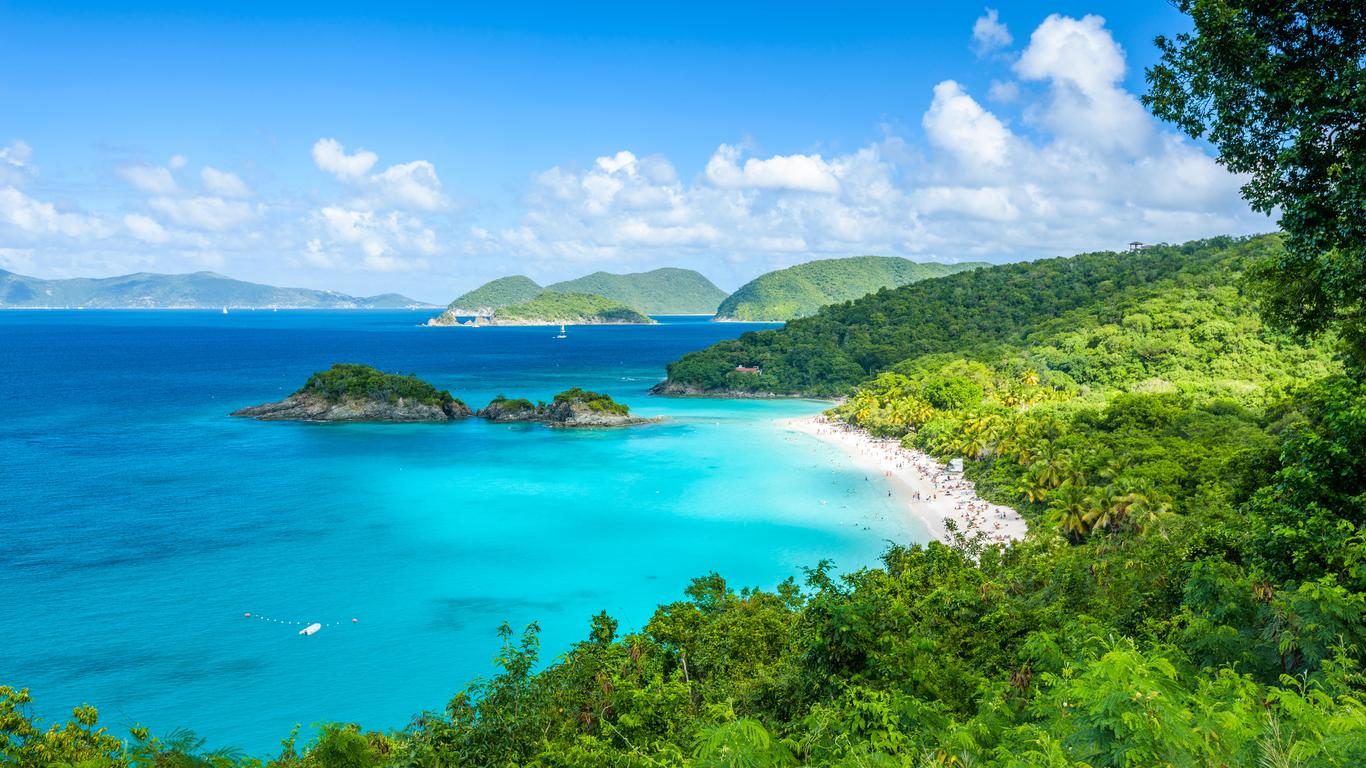Surrounded by the turquoise waters of the Caribbean Sea, Saint John is the smallest of the three U.S. Virgin Islands. It was inhabited by the Taino people before the 17th-century arrival of the Danish West India Company and the establishment of sugar cane plantations that would shape the island’s history.
Things to do in Saint John
Around two-thirds of Saint John is protected within Virgin Islands National Park, which encompasses blissful beaches and tropical forests that were replanted after being cleared for sugar cane plantations. Stop at the Cruz Bay Visitor Center before setting out along the Lind Point Trail. Relax on beautiful Honeymoon Beach or head to picture-perfect Hawksnest Beach to snorkel with sea turtles.
In the south of Saint John are the remains of the Reef Bay Sugar Mill, which was used for processing sugar cane and distilling rum from the early 19th century. Listed on the U.S. National Register of Historic Places, it is one of the best-preserved examples of a West Indies sugar mill. Also of note is the Annaberg Plantation where you can learn about the sugar industry’s links to slavery.
For one of the best panoramas on Saint John, head to the Trunk Bay Viewpoint, which overlooks a blindingly white stretch of sand. Signs detailing the local marine life dot the Coral Reef Underwater Park Trail, which is a short swim offshore. Backing nearby Cinnamon Bay Beach are the ruins of an 18th-century plantation and Taino culture archaeological remains.
Getting around Saint John
Regular ferries connect to Cruz Bay from Saint Thomas, which is home to Cyril E. King Airport. From here, there are flights to destinations across North America. Buses travel around Saint John, although renting a car gives you greater freedom to explore the island.





